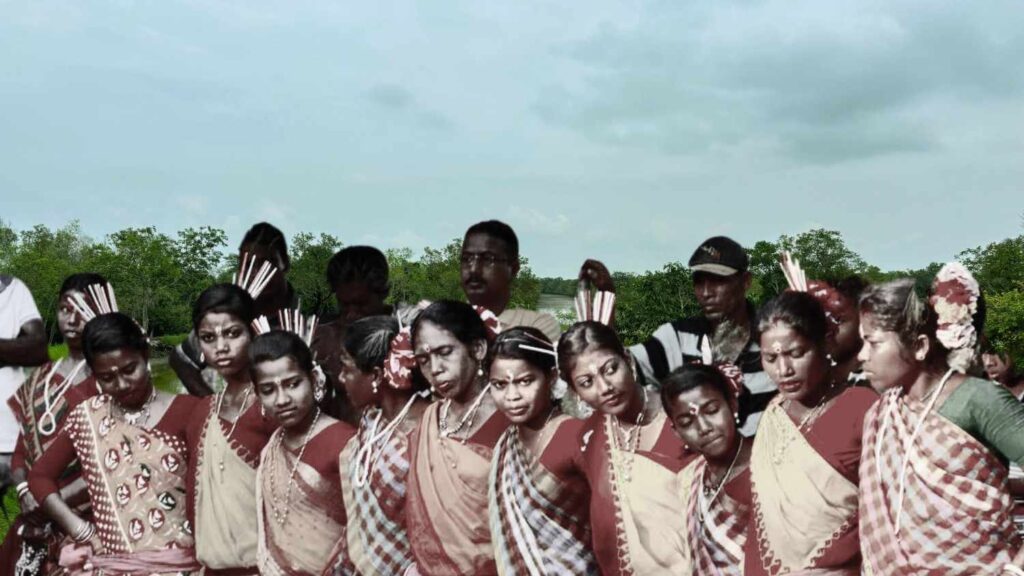Discover the Vibrant Adivasi Cultures of Sundarban: A Living Heritage
The Sundarbans, known for its dense mangrove forests and the majestic Royal Bengal Tiger, is not only a natural wonder but also a cultural treasure trove. Among its most precious elements are the Adivasi (indigenous) communities who have lived in harmony with this wild and mysterious land for generations. These communities have developed a unique way of life deeply intertwined with nature, spirituality, and resilience. In this blog, we take a closer look at the Sundarban Adivashi cultures, their traditions, and how they continue to thrive in one of the most challenging and beautiful ecosystems in the world.

Who Are the Adivasis of Sundarban?
The term “Adivasi” means “original inhabitants” in Sanskrit. In the Sundarbans, the major tribal groups include:
- Munda
- Oraon
- Santhal
- Mahato
- Bhumij
These communities originally migrated from other forested regions of India and have settled in parts of the Sundarban delta in West Bengal and Bangladesh, where they adapted their lives to suit the harsh terrain of the mangroves.
A Lifestyle in Harmony with Nature
Sundarban Adivasis rely heavily on fishing, honey collection, crab catching, and agriculture. What sets them apart is their deep respect for nature and traditional ecological knowledge.
Bonbibi Worship:
The most iconic symbol of Sundarban spirituality is Bonbibi, the forest goddess. Adivasis pray to her for protection from tigers and other dangers of the forest. Bonbibi’s legend is central to the lives of all who depend on the jungle for survival.
Traditional Fishing & Forest Skills:
Many Adivasi men are skilled in navigating the tide-driven rivers, setting fishing traps, and reading the forest for signs of wildlife. These age-old techniques are passed down through generations.
Art, Music, and Dance: The Cultural Identity
Adivasi culture is vibrant, colorful, and filled with oral traditions:
Folk Songs & Instruments:
The Adivasis sing songs about the forest, their gods, and daily life. Traditional instruments like the madal, dhamsa, and flute are used in festivals and rituals.
Dance Forms:
Tribal dances during Tusu Parab, Karam Puja, and Sarhul celebrate nature’s bounty and community spirit. These dances are performed in traditional attire with tribal jewelry and body art.
Handicrafts and Weaving:
Women engage in weaving date palm mats, bamboo baskets, and handmade jewelry, which are both practical and artistic expressions of their identity.
Festivals Celebrated by the Adivasi Communities
Despite their rich culture, Sundarban Adivasis face several issues: Climate Change & Cyclones: Rising sea levels and frequent storms threaten their homes and livelihoods.
Lack of Education & Healthcare: Remote locations often mean limited access to basic services.
Loss of Cultural Identity: Modern influences and migration are diluting traditional practices.
However, many NGOs and local leaders are now working to preserve their culture and improve living conditions.
How Tourists Can Respectfully Experience Adivasi Culture
If you plan a Sundarban tour, consider the following:
- Visit tribal villages with local guides who can explain customs and etiquette.
- Attend cultural programs that showcase tribal dance and music.
- Purchase locally made handicrafts to support the community.
- Avoid taking photos without permission and always respect their privacy.
Want to Explore Sundarban’s Tribal Heritage?
Book a guided tour with us to experience Sundarban Adivasi villages, local rituals, and cultural performances. Join us in celebrating and supporting this unique heritage.
👉 Contact Us Today : 7679737758 or check out our Sundarban Cultural Tour Packages : visit Sundarban Matla tourism.
